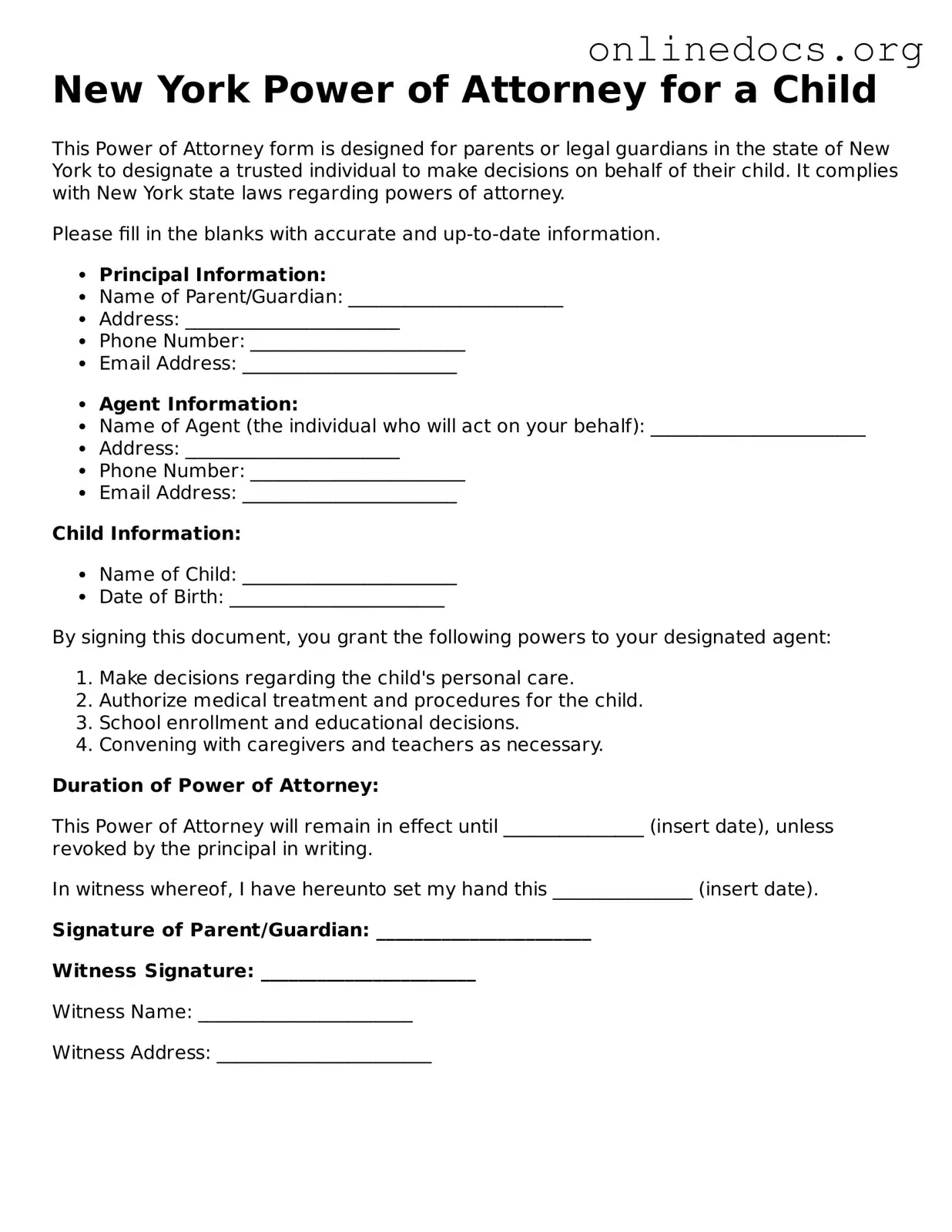The New York Power of Attorney for a Child form shares similarities with the General Power of Attorney. Both documents allow an individual to designate another person to act on their behalf. In the case of a General Power of Attorney, the authority granted can cover a wide range of financial and legal matters. However, the Power of Attorney for a Child is specifically tailored to allow a designated caregiver to make decisions regarding a child's welfare, including education and medical care, thereby focusing on the unique needs of minors.
Another document that resembles the Power of Attorney for a Child is the Medical Power of Attorney. This form empowers an individual to make healthcare decisions for someone else if they are unable to do so themselves. Like the Power of Attorney for a Child, it ensures that the appointed person can act swiftly in medical situations, making critical decisions based on the best interests of the child. This document is particularly important in emergencies when immediate medical attention is required.
The Child Custody Agreement is also similar in that it addresses the care and decision-making responsibilities for a child. While the Power of Attorney for a Child allows temporary delegation of authority, a Child Custody Agreement establishes long-term arrangements regarding where the child will live and who will make significant decisions about their upbringing. Both documents aim to ensure that the child's needs are met, but they operate in different contexts and durations.
Additionally, the Guardianship Agreement shares commonalities with the Power of Attorney for a Child. This document is often used when a parent is unable to care for their child, granting another individual the authority to act in the child's best interests. While the Power of Attorney can be temporary and specific, a Guardianship Agreement typically involves a more permanent arrangement, providing a stable environment for the child under the care of a designated guardian.
For those interested in vehicle transactions, understanding the complexities of a thorough Motor Vehicle Bill of Sale process can provide clarity and ensure compliance with legal requirements, ultimately protecting both the buyer and seller throughout the sale.
The Adoption Agreement also bears resemblance to the Power of Attorney for a Child, as both documents involve the legal rights and responsibilities of caring for a child. An Adoption Agreement permanently transfers parental rights from birth parents to adoptive parents, whereas the Power of Attorney for a Child allows for temporary decision-making authority. Both documents reflect the importance of ensuring that a child's needs are prioritized and that they have a responsible adult to care for them.
The Temporary Custody Agreement is another document that aligns with the Power of Attorney for a Child. This agreement is often used when parents need to delegate their custody rights temporarily, allowing another person to care for their child for a specific period. Similar to the Power of Attorney, it ensures that the child has a responsible adult looking after their welfare, but it is typically limited to a set timeframe and specific circumstances.
Finally, the Consent for Medical Treatment form has similarities with the Power of Attorney for a Child, particularly in healthcare contexts. This document allows a parent or guardian to authorize medical treatment for a child when they are unable to be present. Like the Power of Attorney for a Child, it ensures that a trusted individual can make important healthcare decisions on behalf of the child, emphasizing the necessity of having someone in place to act quickly in medical emergencies.
